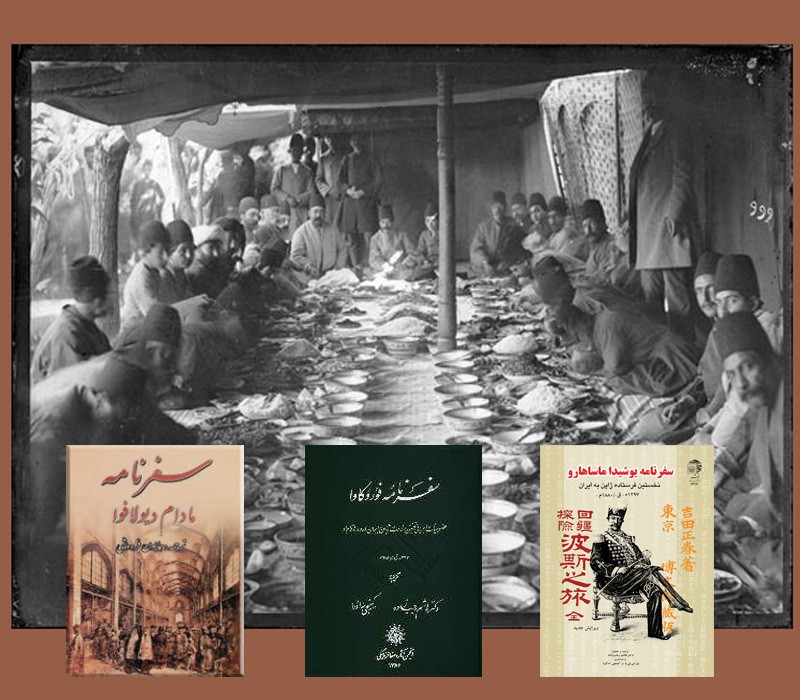Travelogues are valuable sources of information that reflect the culture, traditions and customs of people living in a particular region or country.
Reading travelogues helps acquire information about a place and its people. It creates a picture portrayed on the basis of the views of foreign visitors, who invariably view locals with curiosity and vice versa, IBNA reported.
Travelogues by foreigners’ visiting Iran in the past serve as a valuable historical record of an outsider’s perspective to understand how Iranians lived; their customs, culture and traditions. If the trip were made during a certain period marked by a special ceremony, as in the holy month of Ramadan, that would also find mention in their writings.
The ninth month of the Islamic calendar, Ramadan, is observed by Muslims worldwide as the month of fasting. People abstain from eating and drinking during daylight hours, and food and drink is served before dawn and after sunset.
‘The Travelogue of Furukawa’ and ‘The Travelogue of Masaharu Yoshida’ from Japan, both translated by Hashem Rajabzadeh, and ‘The Trips to Iran, Susa and Chaldea’ by Jane Dieulafoy, French, translated by Ali-Mohammad Farahvashi, are among the works which have references to Ramadan in Iran, during the Qajar era (over 100 years ago).
At times, writers of travelogues base the story of their journey on “their incentives of travelling” to a particular land, which must be taken into consideration with caution. However, others write their observations with no particular motive.
From this perspective, when a comparison of European and Asian travelogues is made, Iranian anthropologists and historians believe the Japanese have viewed Iranian culture and customs more fairly.
Vivid Testimony
A delegation of diplomats headed by Masahura Yoshida traveled to Iran in 1880, for the first time in the two nations’ history. The delegates included an officer Nobuyoshi Furukawa and four merchants. Their travelogues are a vivid testimonial to what they saw and experienced.
For the Japanese this was their first experience of Persia and the Middle East. Travelling by sea, they arrived at Bushehr in the Persian Gulf. On their way to the capital Tehran, they visited the ruins of Persepolis and Pasargadae. After staying for about four months in Tehran, they left the capital for the port of Anzali on the Caspian Sea for their departure from Iran.
Yoshida explains the customs of Ramadan as such: “During this month, Iranians pray and believe that it is not just required to stop eating and drinking, but it is necessary not to look at women with sinful eyes and not tell lies in business and trade.”
Furukawa also describes how Iranians pass their time during Ramadan and emphasizes on the feast held at the end of the month. “This is the month which Muslims believe their holy book Qur’an was revealed to Prophet Muhammad (PBUH) in Ramadan, so they read it more than at other times. People celebrate the end of the month by giving grand feasts, having different kinds of food and drinks,” he writes.
French Documentation
Dieulafoy (1851-1916) was a French archaeologist, explorer, novelist and journalist. Together with her husband, she is known for her excavations at Susa, an ancient city in western Iran, located in the lower Zagros Mountains, between the Karkheh and Dez Rivers.
They first visited Persia in 1881, and returned twice after that. In the first journey to Persia, they travelled widely through the country, from Tabriz to Tehran, Isfahan and Shiraz. Dieulafoy documented the pair’s explorations in photographs, illustrations, and writing. She took daily notes during her travels, which were later published in two volumes.
The couple was greatly interested in studying Iranian mosques and shrines. However, as a custom at that time, non-Muslims were not allowed to enter mosques and religious places, especially in Ramadan.
Dieulafoy has noted this point in her writings: “It was three days to the end of Ramadan, and it was time for us to visit the historical religious monuments in Isfahan. As we were not Muslims, in order to enter these places, we needed official permission. But unfortunately, the city governor was away on a trip and his substitute was not powerful enough to order the strict religious officials in charge of the monuments to give us the chance.”


